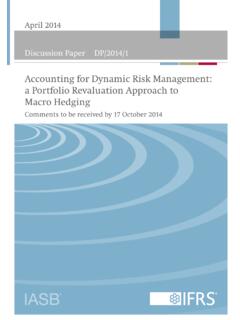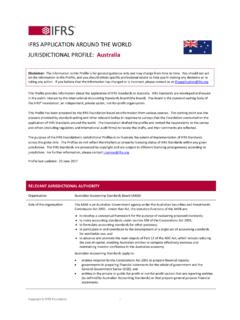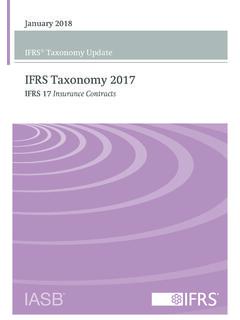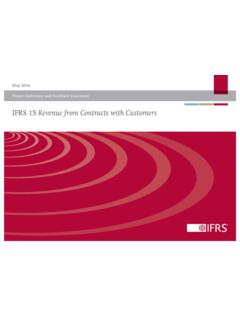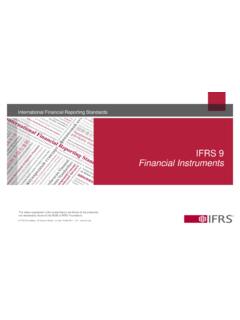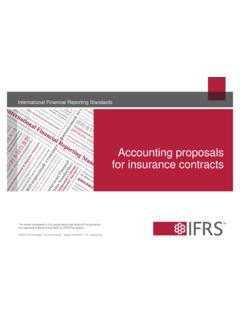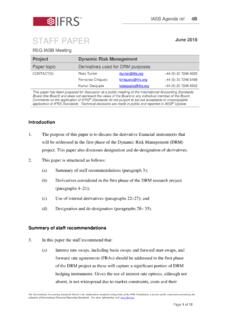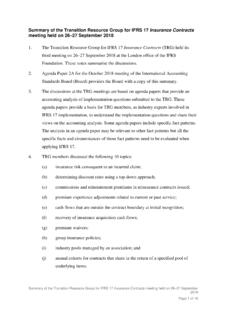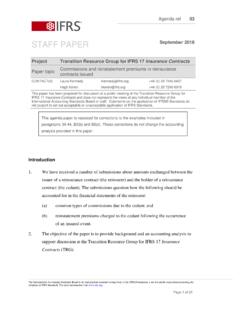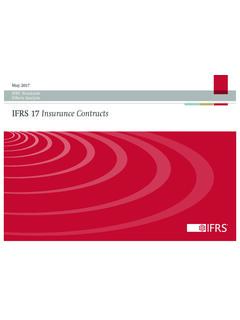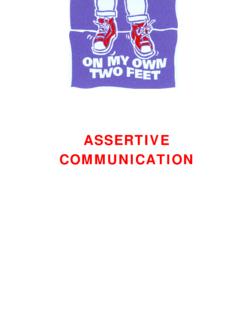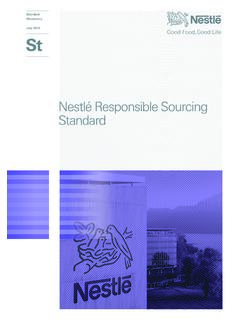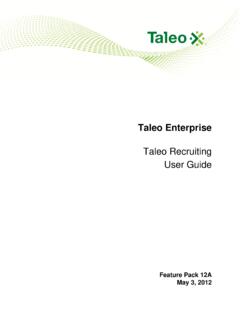Transcription of Discussion Paper: Business Combinations under Common …
1 IFRS StandardsDiscussion Paper DP/2020/2 November 2020 comments to be received by 1 September 2021 Business Combinations under Common ControlBusiness Combinations under Common ControlComments to be received by 1 September 2021 Discussion Paper Business Combinations under Common Control is published by the International Accounting Standards Board (Board) for comment only. comments need to be received by 1 September 2021 and should be submitted in writing to the address below, by email to or electronically using our Open for comment documents page at: comments will be on the public record and posted on our website at unless the respondent requests confidentiality.
2 Such requests will not normally be granted unless supported by a good reason, for example, commercial confidence. Please see our website for details on this policy and on how we use your personal : To the extent permitted by applicable law, the Board and the IFRS Foundation (Foundation) expressly disclaim all liability howsoever arising from this publication or any translation thereof whether in contract, tort or otherwise to any person in respect of any claims or losses of any nature including direct, indirect, incidental or consequential loss, punitive damages, penalties or contained in this publication does not constitute advice and should not be substituted for the services of an appropriately qualified : 978-1-911629-98-6 2020 IFRS FoundationAll rights reserved.
3 Reproduction and use rights are strictly limited. Please contact the Foundation for further details at of Board publications may be obtained from the Foundation s Publications Department. Please address publication and copyright matters to or visit our webshop at The Foundation has trade marks registered around the world (Marks) including IAS , IASB , the IASB logo, IFRIC , IFRS , the IFRS logo, IFRS for SMEs , the IFRS for SMEs logo, IFRS Taxonomy , International Accounting Standards , International Financial Reporting Standards , the Hexagon Device , NIIF and SIC . Further details of the Foundation s Marks are available from the Foundation on Foundation is a not-for-profit corporation under the General Corporation Law of the State of Delaware, USA and operates in England and Wales as an overseas company (Company number: FC023235) with its principal office in the Columbus Building, 7 Westferry Circus, Canary Wharf, London, E14 4HD.
4 IFRS FoundationBusiness Combinations under Common Control3 Contentsfrom pageINTRODUCTION AND invitation TO COMMENT5 Why is the Board publishing this Discussion Paper?5 Who will be affected if the preliminary views in this Discussion Paper are implemented?6 How did the Board reach its preliminary views?6 What does this Discussion Paper include?7 What are the next steps?7 invitation to comment7 Questions for respondents8 Deadline14 How to comment14 SECTION 1 OBJECTIVE, SCOPE AND FOCUS15 Background15 Objective of the project17 Scope of the project17 Focus of the project19 Interaction with other projects21 Question for respondents21 SECTION 2 SELECTING THE MEASUREMENT METHOD22 Stakeholder input22 Main considerations in selecting the measurement method26 The cost benefit trade-off and other practical considerations for Combinations that affect non-controlling shareholders31 Summary of the Board s preliminary views36 The effects of implementing the Board s preliminary views36 Questions for respondents38 SECTION 3 APPLYING THE ACQUISITION METHOD40 Distributions from equity43 Contributions to equity44 Question for respondents46 SECTION 4 APPLYING A BOOK-VALUE METHOD47 Stakeholder
5 Input48 Measuring the assets and liabilities received49 Measuring the consideration paid52 Reporting the difference between the consideration paid and assets and liabilities received57 Reporting transaction costs59 Providing pre- combination information60 Questions for respondents62 Discussion Paper November 2020 IFRS Foundation4 SECTION 5 DISCLOSURE REQUIREMENTS65 Disclosure when applying the acquisition method65 Disclosure when applying a book-value method67 Questions for respondents71 APPENDIX A TERMS USED IN THIS Discussion PAPER73 APPENDIX B SCOPE OF THE PROJECT76 Which transactions are within the project s scope?76 Which company s reporting?79 Which types of financial statements?79 APPENDIX C MEASURING DISTRIBUTIONS FROM EQUITY81 The fair-value-based approach82 The impairment-based approach83 Summary of the two approaches83 IFRS FoundationBusiness Combinations under Common Control5 Introduction and invitation to commentThis Discussion Paper is designed to be accessible to a wide audience.
6 It uses diagrams, colour and, where possible, simple non-technical language. Appendix A sets out the meanings of the terms defined in this Discussion Paper. Defined terms are in bold type the first time they appear in each is the Board publishing this Discussion Paper?IN1 The International Accounting Standards Board (Board) is undertaking a research project on Business Combinations under Common control Combinations in which all of the combining companies or businesses are ultimately controlled by the same party, both before and after the combination . Diagram provides a simple example of a Business combination under Common A Business combination under Common controlBefore the combinationControlling partyControlling partyReceiving companyReceiving companyTransferring companyTransferring companyTransferred companyTransferred companyBPACA fter the combinationBPACIN2 In the example in Diagram , control of Company C is transferred from Company A to Company B.
7 All three companies are ultimately controlled by Company P, the controlling party, both before and after the transaction. IFRS Standards provide requirements on how companies P, A and C should report this transaction (see paragraph ). However, no IFRS Standard specifically applies to how Company B (the receiving company) should report its combination with Company C (the transferred company) such Combinations are outside the scope of IFRS 3 Business Combinations . In the absence of a specifically applicable IFRS Standard, the receiving company is required to develop its own accounting policy for these The Board is carrying out a research project on Business Combinations under Common control in response to stakeholder feedback that the lack of a specifically applicable IFRS Standard for such Combinations has resulted in diversity in practice.
8 Furthermore, companies often provide little information about such Combinations . The objective of the project is to explore possible reporting requirements for a receiving company that would reduce that diversity in practice and provide users of the receiving company s financial statements with better information about these IAS 8 Accounting Policies, Changes in Accounting Estimates and Paper November 2020 IFRS Foundation6IN4 This Discussion Paper summarises the results of this research. It sets out the Board s preliminary views on such possible reporting requirements and seeks feedback on those preliminary will be affected if the preliminary views in this Discussion Paper are implemented?IN5 If the preliminary views in this Discussion Paper are implemented, they would result in new requirements for Business Combinations under Common control.
9 Any such requirements would apply to the financial statements of the receiving company the company to which control of one or more companies or businesses has been transferred in the combination . (In Diagram , the receiving company is Company B.) Typically, those possible reporting requirements would apply to the receiving company s consolidated financial statements only. However, in some circumstances, those possible reporting requirements would also apply to other types of financial statements prepared by the receiving company (see paragraphs and ).IN6 If the preliminary views are implemented, diversity in practice would be reduced and the reporting of Business Combinations under Common control by the receiving company would be more transparent and result in more relevant and more comparable information about these Combinations .
10 IN7 The preliminary views would not affect reporting by the controlling party, the transferring company or the transferred company (companies P, A and C in Diagram ).How did the Board reach its preliminary views?IN8 In reaching its preliminary views, the Board considered:(a) whether and when Business Combinations under Common control are similar to Business Combinations covered by IFRS 3;(b) what information would be useful to users of the receiving company s financial statements;(c) whether the benefits of providing particular information would justify the costs of providing it; (d) how complex particular approaches would be; and(e) whether particular approaches would create opportunities for accounting arbitrage (sometimes called structuring opportunities ).
